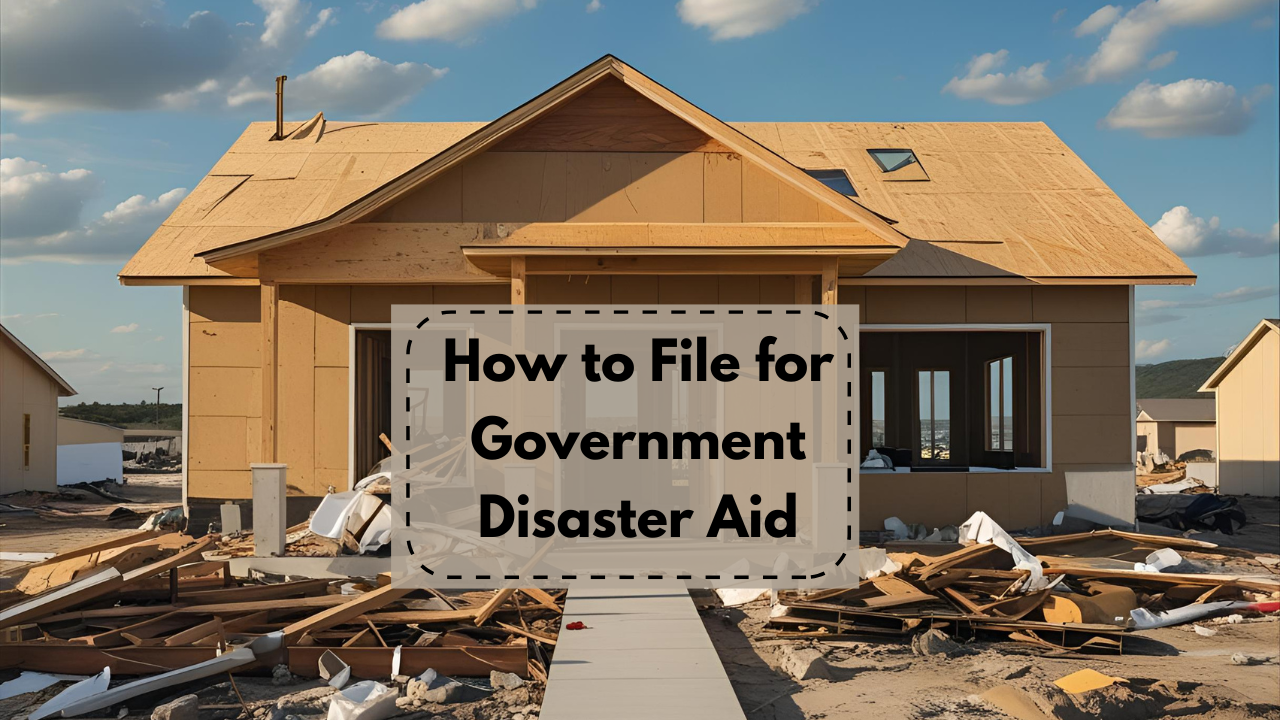Natural disasters like floods, wildfires, hurricanes, and earthquakes can strike without warning, leaving families and communities devastated. When such emergencies occur, the government offers disaster assistance to help people recover, rebuild, and get back on their feet.
If you’ve recently experienced a disaster, it’s important to know how to apply for financial aid, housing help, medical relief, and other emergency services. This blog outlines how to file for government disaster aid in 2025 and provides a state-by-state directory of regional disaster relief offices to help you take action fast.
Table of Contents
- What Is Government Disaster Aid?
- Who Qualifies for Emergency Relief?
- Types of Disaster Assistance Available
- Step-by-Step Guide to Filing a Disaster Aid Claim
- Required Documents and Information
- Regional Disaster Aid Office Directory
- Additional Tips for Fast Approval
- Final Thoughts: Help Is Closer Than You Think
1. What Is Government Disaster Aid?
Government disaster aid is emergency assistance provided by federal, state, and local authorities to support individuals, families, and businesses impacted by natural or man-made disasters. Relief services typically include:
- Temporary shelter or housing
- Emergency food and water supplies
- Financial support for home repairs
- Medical and mental health assistance
- Reimbursement for disaster-related expenses
- Support for displaced workers or lost wages
The Federal Emergency Management Agency (FEMA) is the primary national agency coordinating disaster relief in the U.S., while other countries have equivalent agencies and ministries.
2. Who Qualifies for Emergency Relief?
You may qualify for government disaster aid if:
- Your primary home or property was damaged or destroyed in a declared disaster zone
- You are temporarily displaced and need housing
- You lost income, personal belongings, or vital records due to the event
- You are unable to afford basic needs like food, water, or healthcare as a result
Both homeowners and renters can apply. Businesses and nonprofits may also qualify for special assistance.
3. Types of Disaster Assistance Available
Here’s a quick breakdown of aid types commonly available in 2025:
| Relief Type | Description |
|---|---|
| Housing Assistance | Covers temporary housing, rent, or repairs |
| Individual & Household Aid | Grants for essentials like clothing and furniture |
| Medical & Funeral Aid | Helps with injury treatment or funeral costs |
| Unemployment Assistance | Provides income support for lost jobs |
| Crisis Counseling | Emotional support and mental health services |
| Small Business Loans | Support for recovery and rebuilding |
4. Step-by-Step Guide to Filing a Disaster Aid Claim
Filing for aid can feel overwhelming, but it’s easier when you know the steps. Here’s how to get started:
Step 1: Confirm the Disaster Declaration
Visit www.fema.gov/disaster to see if your area is included in a federally declared disaster zone. Only declared areas qualify for federal aid.
Step 2: Collect Documentation
Gather proof of residence, identity, and damage (photos, bills, estimates). Keep all receipts related to relocation or repairs.
Step 3: Apply Online or by Phone
Apply via the FEMA Disaster Assistance website at www.disasterassistance.gov or call 1-800-621-FEMA (3362).
Step 4: Visit a Local Disaster Recovery Center
If available, visit a local office for in-person help. These centers often provide multilingual support, internet access, and direct counseling.
5. Required Documents and Information
Be ready with the following:
- Government-issued photo ID
- Proof of primary residence (utility bill, lease, etc.)
- Social Security number or ITIN
- Insurance details (if applicable)
- Income and bank account details
- Photos of damage or loss
- Receipts for temporary expenses
Providing complete and accurate information speeds up the approval process.
6. Regional Disaster Aid Office Directory (U.S. Example)
Here’s a quick guide to regional FEMA and disaster assistance offices:
| Region / State | Disaster Office or FEMA Center | Contact |
|---|---|---|
| California | FEMA Region 9 – Oakland | fema.gov/region-9 |
| Texas | FEMA Region 6 – Denton | fema.gov/region-6 |
| Florida | FEMA Region 4 – Atlanta, GA | fema.gov/region-4 |
| New York | FEMA Region 2 – New York City | fema.gov/region-2 |
| Illinois | FEMA Region 5 – Chicago | fema.gov/region-5 |
| Washington | FEMA Region 10 – Bothell | fema.gov/region-10 |
| Puerto Rico | FEMA Region 2 – Caribbean Area Office | fema.gov/region-2 |
Don’t see your state? You can find your regional contact at: www.fema.gov/about/contact
7. Additional Tips for Fast Approval
✅ Apply as soon as possible. Some programs have deadlines just weeks after the disaster declaration.
✅ Take clear, dated photos of all damage. This helps verify your claim.
✅ Keep a disaster file with receipts, repair quotes, hotel bills, and communications.
✅ Check your email or mail regularly for status updates and additional requirements.
✅ Appeal if you’re denied. Many claims are approved after submitting more documentation.
8. Final Thoughts: Help Is Closer Than You Think
Recovering after a disaster is never easy—but you don’t have to go through it alone. Government agencies and local offices are here to support you with financial aid, housing help, and recovery tools.
In 2025, with more digital applications, local disaster centers, and hotline support, filing for government disaster aid is faster and more accessible than ever. Take the first step today—your recovery starts with one call or click.

